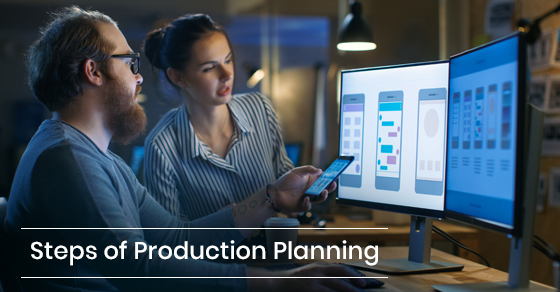Steps of Production Planning
Production planning and control can be very arduous and complicated in some cases, and the same applies to designing hardware that is cutting edge in some instances. This is especially true for companies that are just starting up, or for companies that have a meagre pool of resources to work with during the production planning and control phase of manufacturing electronics. However, the entire process can be streamlined if the 5 steps below are followed, with the end goal being the manufacturing of a prototype that is completely functional.
Designing the Schematic
The ultimate goal is to fabricate a printed circuit board (PCB). As such, the first step that must be taken in order to fabricate a functional PCB is to fabricate a circuit design schematic. In this case, a schematic is similar to a blueprint for a new home.
In order to design the schematic circuit, you will need to hand-pick the most cost-friendly components as well as pick the quintessential topology during the preliminary research phase. In some instances, companies may breadboard, which while rare is sometimes used in modern electronics. However, in most cases, simulations are run during the schematic design step.
Those looking for an affordable but powerful and user-friendly software for electronics design may want to consider using DipTrace because it is a powerful software that is equipped to handle complicated designs but is also easy to use.
Designing the Layout for the PCB
After having used the aforementioned software, the next step is to fabricate the layout for the PCB. It should also be mentioned that optimum performance can usually only be achieved if manual routing of the boards is performed, albeit in some cases it may be possible for a segment to be routed automatically.
Moreover, RF and power circuits tend to be highly sensitive as far as their PCB layouts are concerned, so PCB errors in these areas are very common. Hence, caution must be taken when working with the PCB layouts of many of today’s RF and power circuits, which include the latest GPS, wireless, and Bluetooth devices.
In any event, once the layout for the PCB has been completed, the software will tell the designer if the PCB matches their schematic, as well as indicate if the trace spacings and wire widths are in strict compliance with the protocols for the specific PCB fabrication process that is being implemented. Once the design for the PCB has been finalized the data should be sent to a PCB shop so that prototyping can begin.
Prototype Evaluation and Debugging
Once the first prototype has been sent to your company, you will need to evaluate the prototype to check for any errors that may cause problems in the future. Any problems that have been discovered will need to be debugged as soon as possible. The debugging of a new circuit is a step that can be hard to forecast because you will be unable to accurately determine how long it will take your team to rectify the issue until you determine what the error actually is.
Also, while it is possible that no errors will be detected during the evaluation phase, such a scenario is, in actuality, very rare. In most instances, you will discover at least 2 or 3 problems during the evaluation phase of your first prototype.
Programming the Microcontroller in Question
The vast majority of electronics that are made today include a microcontroller that serves as the “brain” of the device. What’s more, the majority of electronic products with microcontrollers are programmed using the “C” computer language, although certain components of the products may be programmed in an assembly language if the program needs to be very quick and efficient.
Interestingly, while the microcontroller programming may be performed by the same man or woman who designed the PCB circuit, most companies will hire an external software expert to handle the programming of the microcontroller.
The Final Step: 3D Modelling
Step five is usually taken on by an engineer who did not handle the first four steps of production planning. In most cases, assuming you have a clear vision of what your device should look like, a 3D modelling connoisseur is all that is required during the initial phase. However, in due time, you may want to strongly consider hiring an industrial design engineer, as industrial design engineers are highly skilled in making products look sleek and sophisticated.
Considering image is almost everything when it comes to marketing a product, an industrial design engineer can help your product stand out amongst a glut of competitors, and many such engineers have worked on the latest Samsung, LG, and Apple phones and tablets.
Finally, the person that you hire for your 3D modelling should also have extensive experience in the proper use of injection moulding technology. This is because while 3D printing is often utilized for low-volume prototyping, injection moulding is frequently utilized for manufacturing projects that are high-volume in nature. Many 3D designers will make the error of fabricating a model that can be printed in three-dimensions but that cannot be injection moulded.
If you would like to learn more about production planning and control, call Circuits Central at 888-821-7746 or contact here.

